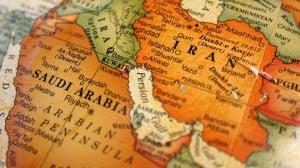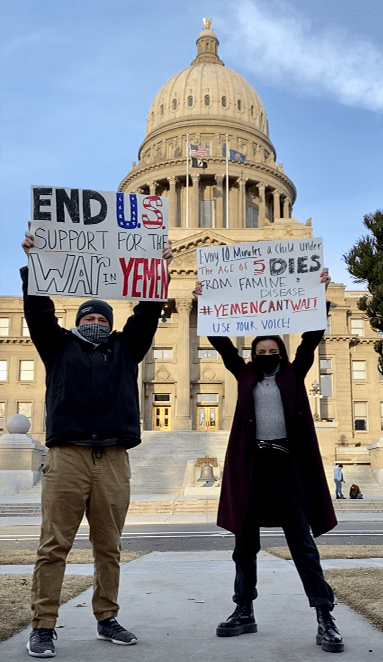China’s Initiative: Iran and Saudi Arabia Are Back on the Diplomatic Track. Ending the Atrocious War in Yemen?
What does it mean for Yemen?

All Global Research articles can be read in 51 languages by activating the Translate Website button below the author’s name (desktop version)
To receive Global Research’s Daily Newsletter (selected articles), click here.
Follow us on Instagram and Twitter and subscribe to our Telegram Channel. Feel free to repost and share widely Global Research articles.
***
The Sunni Kingdom of Saudi Arabia and the Shia Republic of Iran have agreed – in a China brokered deal – to re-establish diplomatic relations within the coming two months.
Question is, will this new Riyadh-Tehran diplomacy bring an end to the horrendously atrocious war in Yemen? The worst killing and maiming of a most impoverished people in the last hundred years. Maybe this was a key objective of China’s in bringing these two countries back together.
Background
Diplomatic relations between the two countries broke down in January 2016, when Iran’s Foreign Minister claimed that Saudi warplanes had “deliberately” targeted Iran’s Embassy in Sana’a, Yemen’s capital city.
As a precursor to that event, on 2 January 2016, the Saudi Government executed 47 people throughout Saudi cities, one of them was a prominent Shia scholar. Iranian protesters about the execution ransacked and set ablaze the Saudi Embassy in Tehran.
This prompted the Saudi Sunni Foreign Minister to cut diplomatic ties with Shia enemy Iran. In hindsight and knowing what we know today, this rather harsh action by the Saudis, smells like provoked and directed by the powers that be – the US and the UK; those who also are the principal arms suppliers to Riyadh for their war against Yemen.
The Riyadh-Tehran conflict is, in fact, a triangular conflict involving Yemen in the first degree.
In September 2014, the Houthis, a humanitarian rebel group, invaded and took control of Sana’a to oust then Yemeni President Abdrabbuh Mansur Hadi, whose government was controlled by Riyadh. The Shiite Houthis have links to Iran.
The Houthis also had a history of rising up against the Saudi Sunni government which for years has played an influential role in Yemen’s internal affairs.
Yemen, being situated in an extremely strategic geographic location overseeing the Sea of Arabia, where 70% of the world’s energy is shipped through, it is likely that the Saudi influence on Yemen is “peddled” by the Pentagon, which has several military bases in Saudi Arabia.
They are Washington’s counterpart – a solid military protection – to the US deal with the Saudi King in 1971, that Saudi Arabia, leader of OPEC, would henceforth trade all hydrocarbons in US-dollars.
This resulted in the world being flooded by petro-dollars. It became an important cornerstone in the US-dollar-hegemony over the world.
Yemen’s so-called civil war began in 2014 when the Houthis took control of Yemen’s capital, Sana’a. The Houthis had – and still have – the support of a large majority of the Yemeni people.
Image: Brendan Bell-Taylor, Action Corps Idaho organizer, and Laura Burton protest the war on Yemen in front of the Idaho State Capitol, in Boise, on January 25, 2021, as part of a Global Day of Action: World Says No to War on Yemen. Sen. Jim Risch, U.S. senator from Idaho, is the top Republican on the Senate Foreign Relations Committee. [Source: twitter.com]
In March 2015, Saudi Arabia, presumably leading a large coalition of nine countries from West Asia and North Africa, launched a “military intervention” – a war against Yemen – which officially is still called, as of this day, the Yemeni Civil War.
The official version is that the Saudis reacted to deposed Yemeni President Hadi’s call for military support to bring him back as the head of Yemen and to get rid of the Houthi movement.
Looking back, and knowing what we know today, the real instigators of this atrocious war against one of the world’s poorest countries, are the US and the UK. They finance the Saudis and supply them with weapons to literally slaughter Yemenis. Predominantly suffering are women and children.
They also starve Yemenis to death by closing vital ports for shipments of food and other life-necessities, the port of Aden and the Red Sea port of Hudeidah, the second largest port in the country.
The US is again fighting a proxy war. Sounds familiar? One of many precursors to the war in Ukraine. How many more are to follow before the killer-empire falls?
This eight-year-old conflict in Yemen is a confrontation between the internationally recognized government, which is backed by a Saudi-led military coalition, and of course, the US and the UK, against the Houthi rebels, supported by the people of Yemen and by Iran.
The country’s humanitarian crisis is said to be among the worst in the world, due to widespread hunger, disease, and attacks on civilians.
According to the UN, over 150,000 people have been killed in Yemen, as well as an estimated more than 227,000 dead as a result of an ongoing famine and lack of healthcare facilities due to the war. Yemen’s population as of March 2023 is estimated 31.6 million.
There are no reliable statistics about the death toll of this war. But it is estimated that at least a third of the victims are women and children. When it comes to starvation, mostly children are concerned.
According to an Oxfam spokesperson, “The armed conflict in Yemen has exacerbated discrimination and inequalities.Women are, in general, struggling from unequal access to services and resources, as decision-making is often made by men in their communities.”
Looking forward
Will this new diplomatic agreement between Riyadh and Tehran, mediated by China over several days in Beijing, bring the long overdue peace to Yemen and the necessary aid funding to rebuild Yemen’s infrastructure and social rehabilitation?
Both countries, Iran and Saudi, committed to “non-interference” in each other’s internal affairs, according to a joint statement by Saudi, Iranian, and Chinese officials.
Representatives of both countries also said that they would resume a security cooperation agreement signed in 2001 and would work to enhance “regional and international peace and security.”
Does this latter include peace in Yemen?
The regional conflict between Riyadh and Tehran is further exacerbated by the two countries supporting opposing sides also in Syria, while Iran backs the Hezbollah movement in Lebanon. Saudi Arabia, along with the US and Israel, consider Hezbollah a terrorist group.
China’s initiative to bring these two Middle-East countries again together and in peace is multi-faceted. It is a major achievement. Iran and Saudi Arabia are among the world’s largest oil and gas producers. Their common interests go way beyond joint OPEC membership.
Both are keen in detaching themselves from the western ever-more chaotic, sanction-prone, fraudulent economic system, intending to shift eastwards – into eastern coalitions led by China and Russia.
Both countries would like to join the BRICS alliance, which is in turn hoping to be admitted to the China-Russia led Shanghai Cooperation Organization (SCO).
China’s Belt and Road Initiative (BRI) has during the last year or so provided strong support to the BRICS-plus, an indication that the BRICS association with eastern groupings and eventually full integration is welcome.
The BRI may also become instrumental in rebuilding Yemen – which would be a positive development for Yemen, plus a quasi– invitation to move towards eastern alliances.
Beijing’s role in brokering the agreement is a major diplomatic win for China, but also for Iran, Saudi Arabia and hopefully also for Yemen. It is a true win-win solution.
While Iraq and Syria conflicts are still lingering on, there are prospects that the dynamics created by China through the renewed diplomatic relations between Riyadh and Tehran, may eventually bring lasting Peace to the Middle East.
*
Note to readers: Please click the share buttons above. Follow us on Instagram and Twitter and subscribe to our Telegram Channel. Feel free to repost and share widely Global Research articles.
Peter Koenig is a geopolitical analyst and a former Senior Economist at the World Bank and the World Health Organization (WHO), where he worked for over 30 years around the world. He lectures at universities in the US, Europe and South America. He writes regularly for online journals and is the author of Implosion – An Economic Thriller about War, Environmental Destruction and Corporate Greed; and co-author of Cynthia McKinney’s book “When China Sneezes: From the Coronavirus Lockdown to the Global Politico-Economic Crisis” (Clarity Press – November 1, 2020).
Peter is a Research Associate of the Centre for Research on Globalization (CRG). He is also a non-resident Senior Fellow of the Chongyang Institute of Renmin University, Beijing.
Featured image is from Silent Crow News


